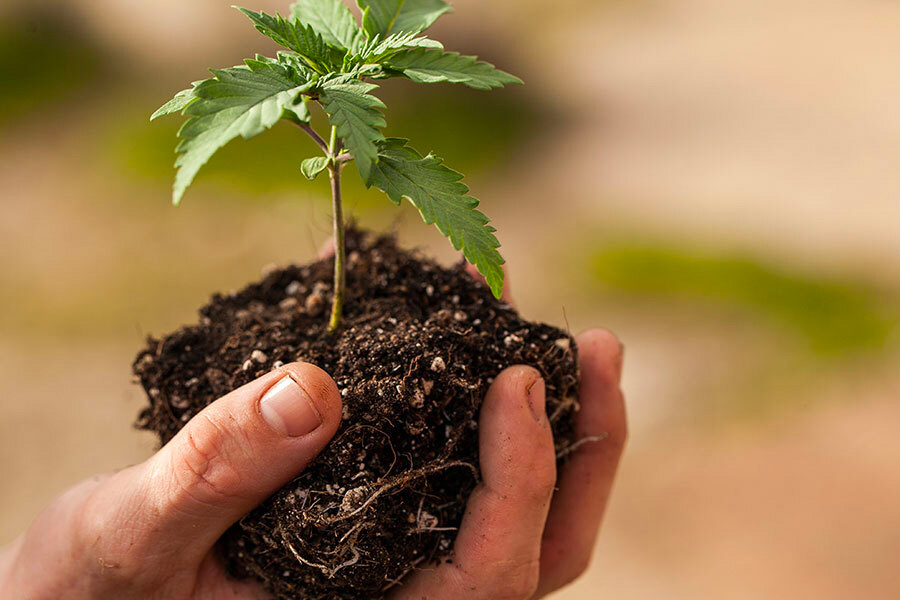Introduction
Transplanting cannabis is a crucial step in the crop cycle that involves setting out seedlings into the field. With the ability to gain a head start by starting seeds in trays within the greenhouse, this process proves particularly valuable in regions with short growing seasons or for those aiming to plant multiple successions within a season. In this blog post, we will explore the various methods of transplanting, including by hand, using water wheel transplanters, and mechanical/carousel transplanters. We will also explore the factors to consider when choosing the most suitable method. Key considerations include labor availability, equipment accessibility, soil type, and capital resources.
Planting by Hand: The Basics and Considerations
When transplanting seedlings planting seedlings by hand is a simple yet effective method that doesn’t require any specialized equipment. While it allows for flexibility and precision when marking planting lines, it’s important to consider the agricultural practices you plan to implement, such as mechanical cultivation, which may require straight lines. We will explore techniques to maintain straight lines, including the use of dibblers and string lines, and their impact on subsequent cultivation processes.
The Water Wheel Transplanter: Efficiency and Versatility
For intermediate-scale growers, the water wheel transplanter proves to be a valuable tool. While not necessarily faster than hand planting, it significantly reduces labor and streamlines the process. Its immediate watering capability and options to incorporate fertilizer or compost tea enhance transplant health. We will highlight the benefits of planting in straight lines for mechanical cultivation and the flexibility it provides for planting in bare soil or plastic mulch. Additionally, we will discuss the various configurations and seating arrangements available, tailoring the transplanter to match your team’s size and efficiency.
Mechanical/Carousel Transplanters: Efficiency and Challenges
Among the transplanting methods, mechanical or carousel transplanters offer the highest efficiency in terms of labor and ground speed. However, they come with specific requirements and challenges. These transplanters require level fields, consistent bed preparation, and skilled operators, making them most suitable for larger operations. We will explore their limitations, including poor handling of young or poorly rooted plants and their incompatibility with certain pot sizes.
Considerations for Equipment Compatibility
It’s crucial to ensure the compatibility between your chosen transplanting method and the transplant plug sizes. Different transplanters are designed for specific ranges of plug sizes, and larger pot sizes may not be compatible with certain models. We will emphasize the importance of selecting planting equipment that matches your pot sizes to ensure efficiency and successful transplantation.
Conclusion
Knowing when to transplant cannabis seedlings and transplanting is a pivotal stage in the crop cycle, allowing for the transition of seedlings from the controlled environment of the greenhouse to their designated field. By understanding the different transplanting methods, such as hand planting, utilizing water wheel transplanters, or employing mechanical/carousel transplanters, growers can make informed decisions based on factors like labor availability, equipment accessibility, and crop requirements. These considerations, along with compatibility between equipment and transplant plug sizes, contribute to ensuring a smooth and efficient transplanting process. Prepare to elevate your transplanting game and set your crop on the path to successful growth!
Addendum: The Importance of Minimizing Cannabis Transplant Shock
One critical aspect of the transplanting process is minimizing the shock experienced by the seedlings. Transplants undergo physical handling, brief exposure of their roots to light, and a sudden transition from the controlled environment of the greenhouse to the unpredictable conditions of the field, including varying weather and soil types. To mitigate cannabis transplant shock, it is crucial to handle the seedlings with care, especially auto flowers, and ensure they remain evenly moist before being set out into the field. Throughout a long day of transplanting, be sure to water the seedlings regularly as you load up your transplanting equipment. By prioritizing these measures, you can enhance the success of the transplanting process and promote optimal growth for your plants.
You May Also Want to Read
